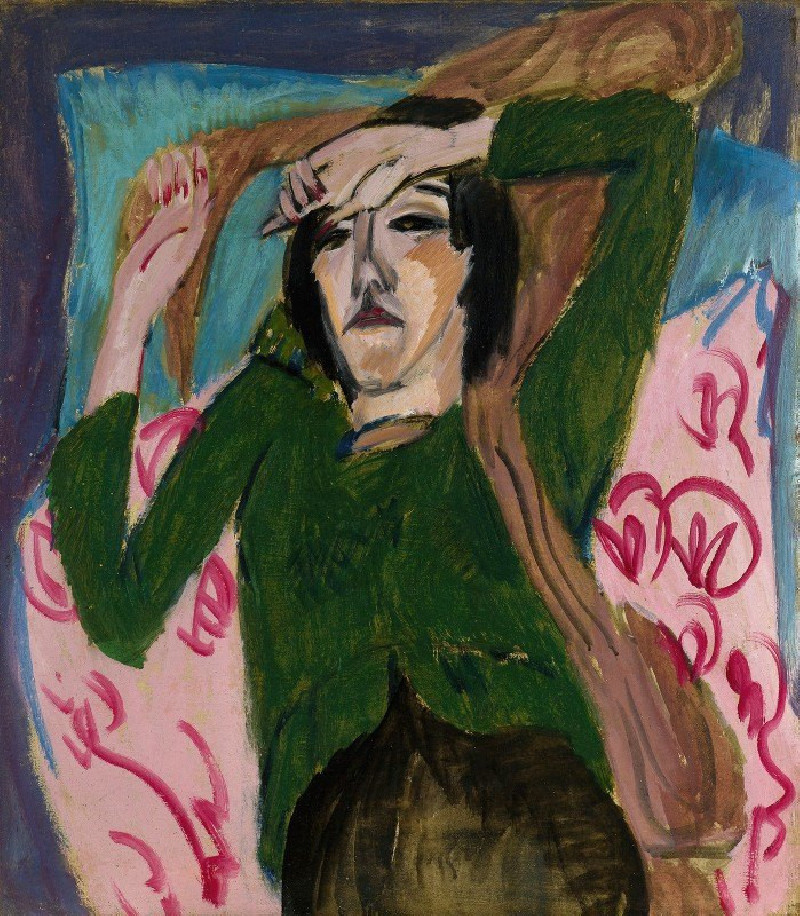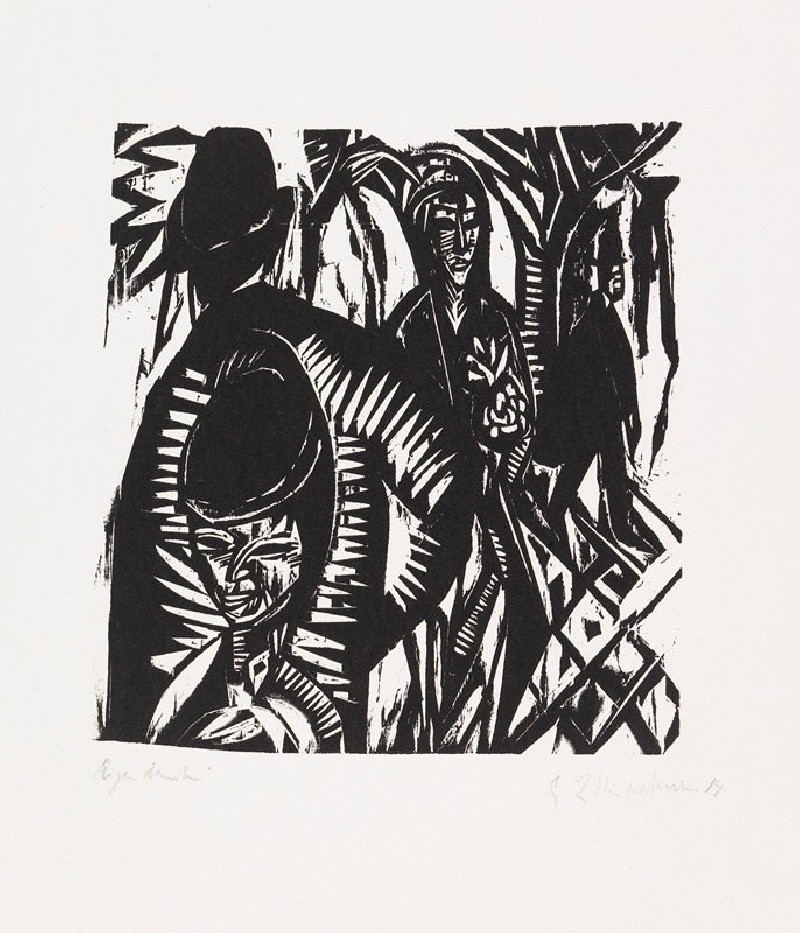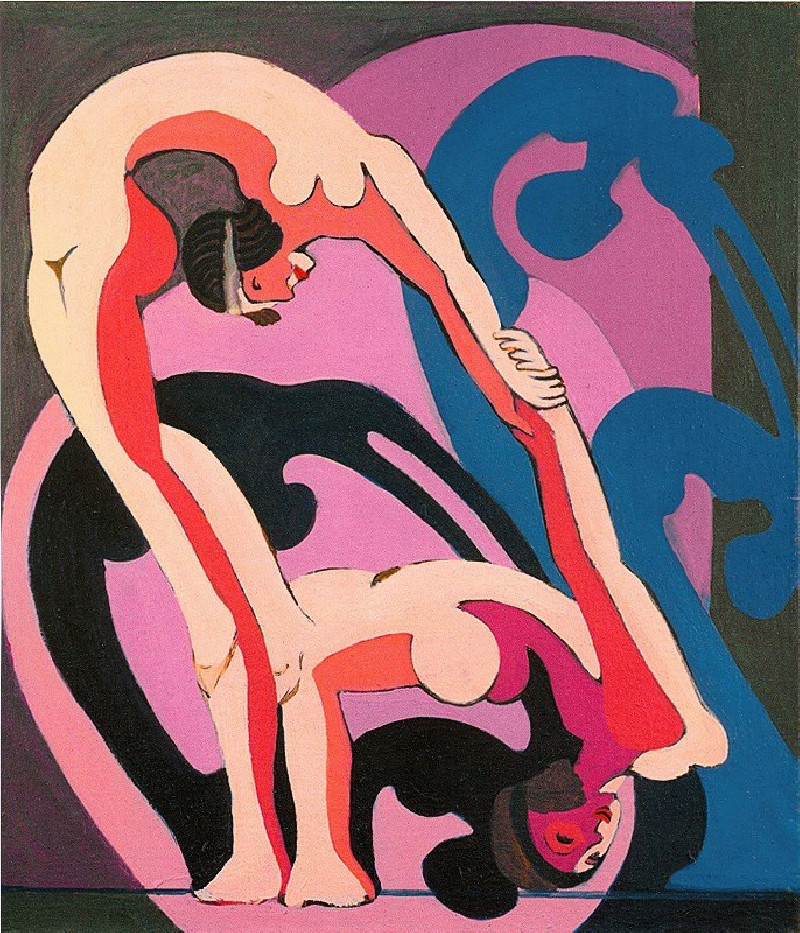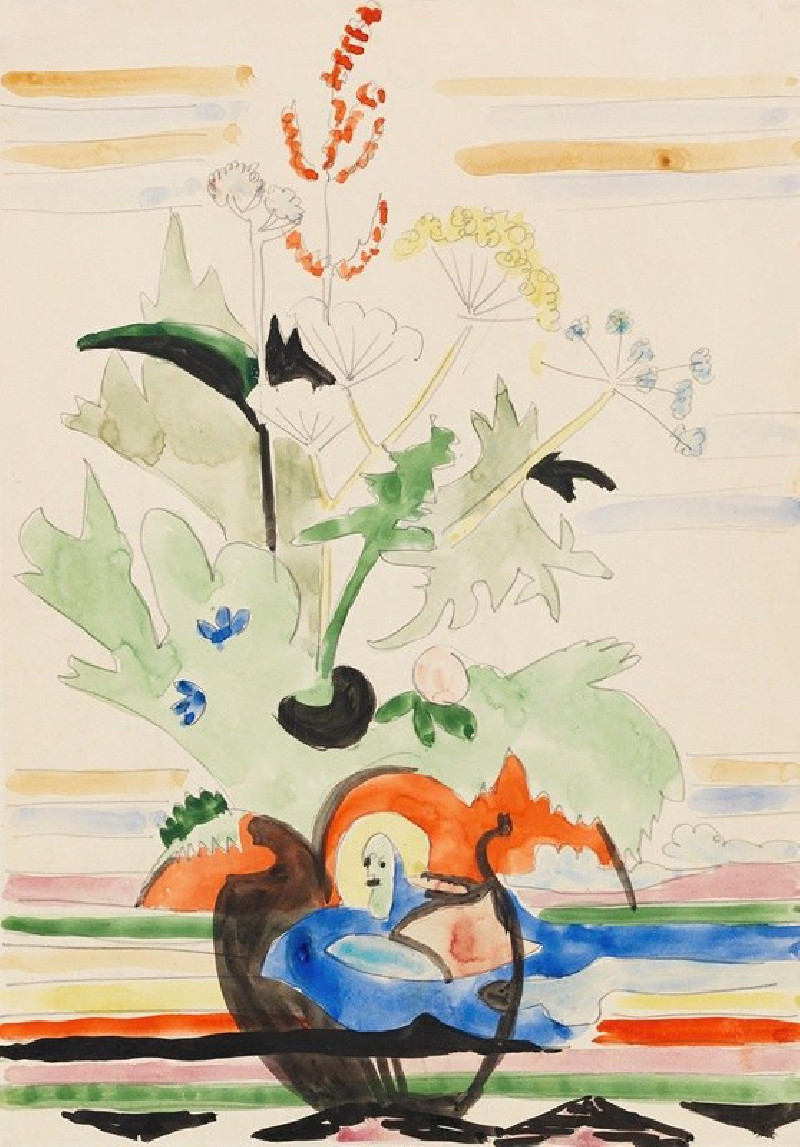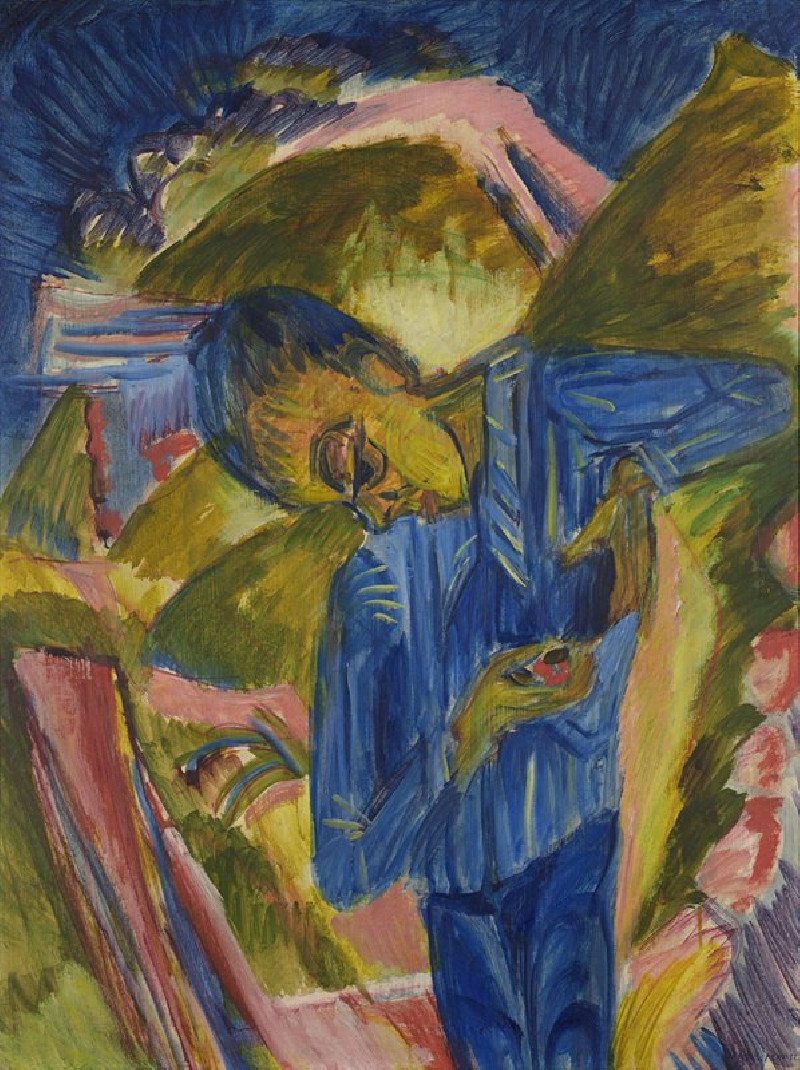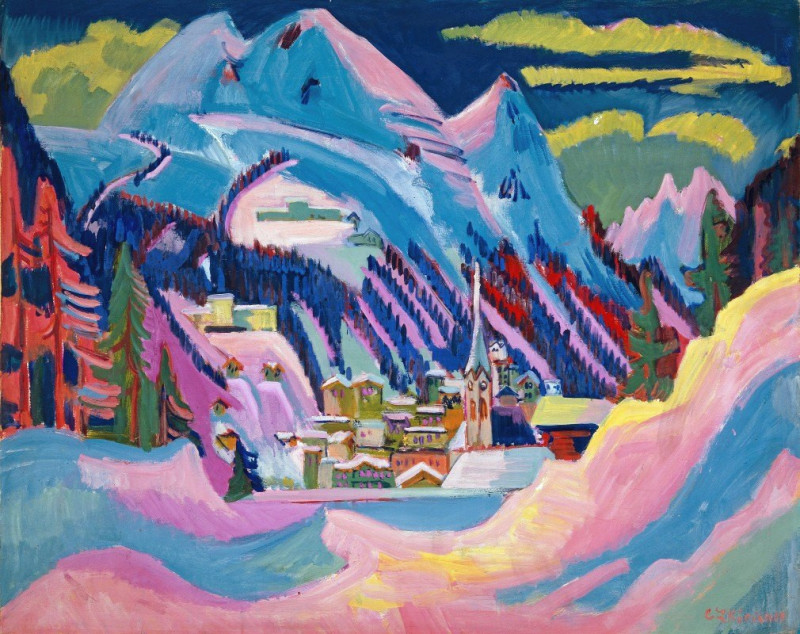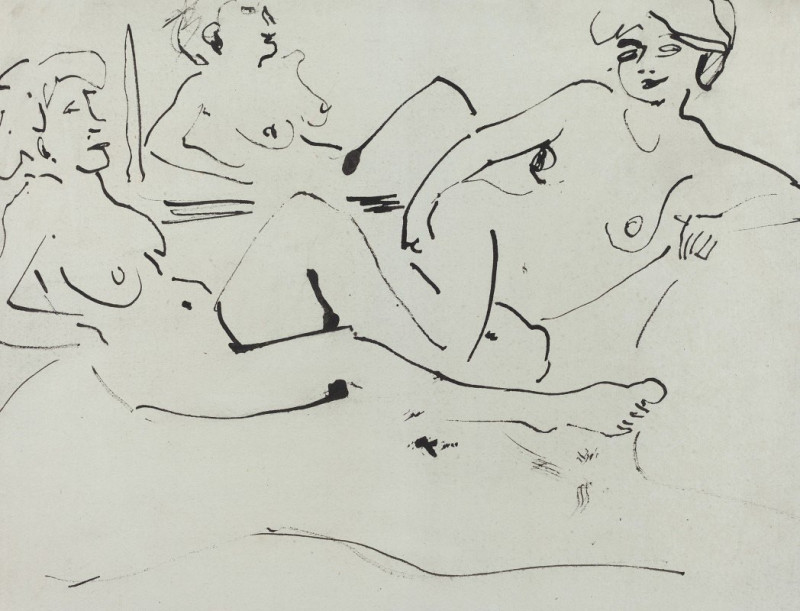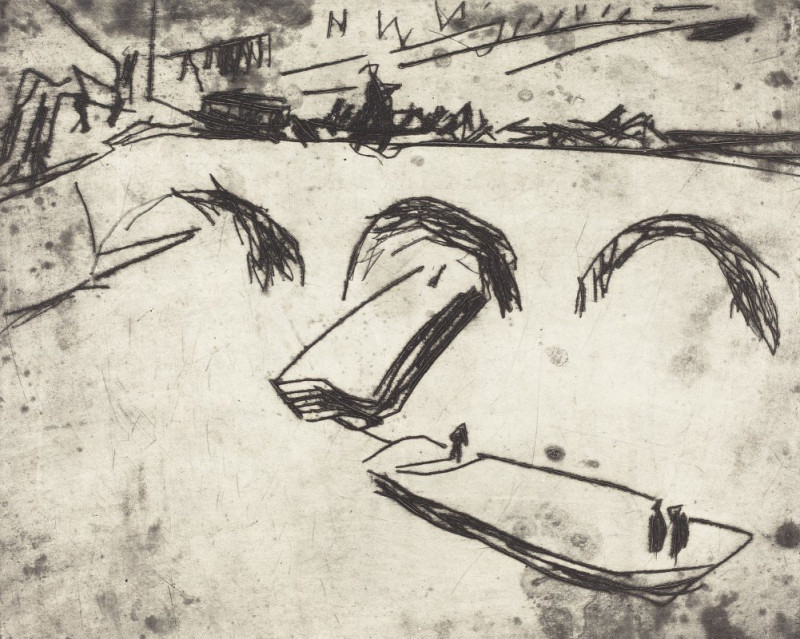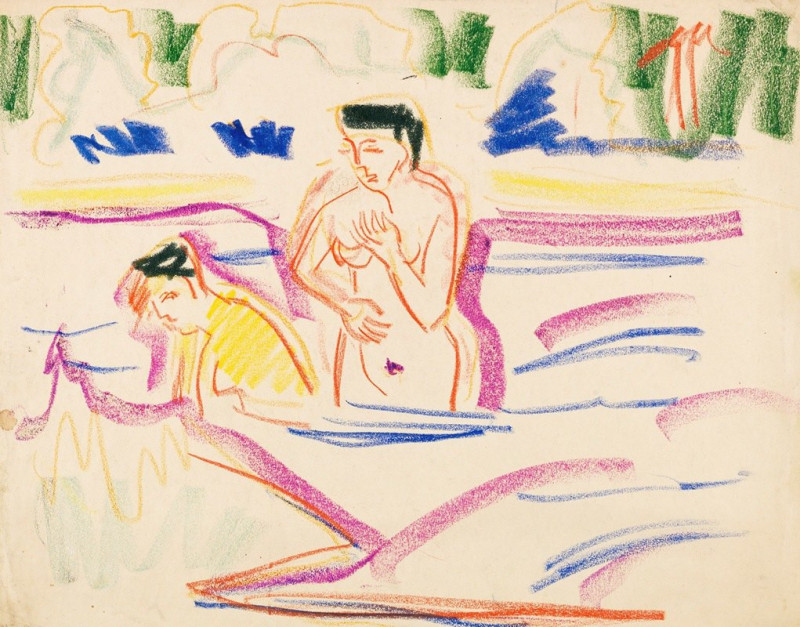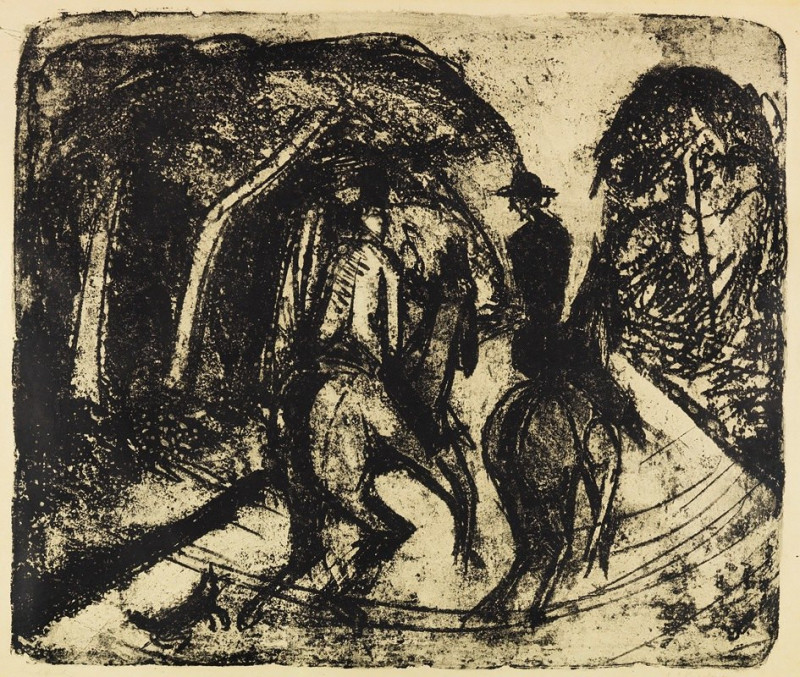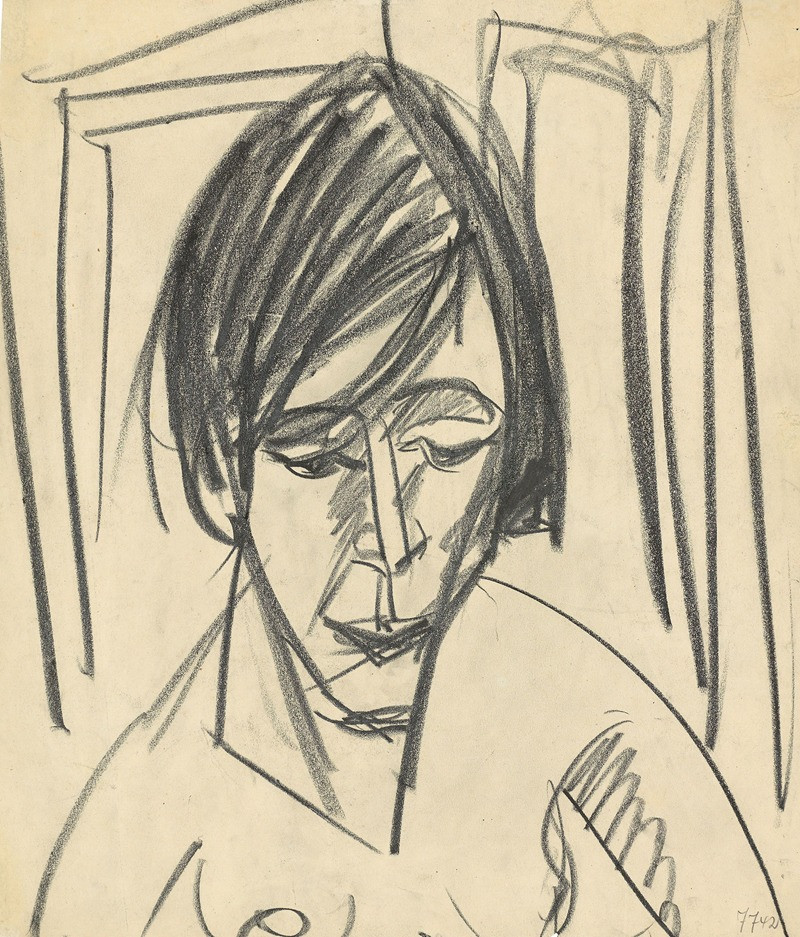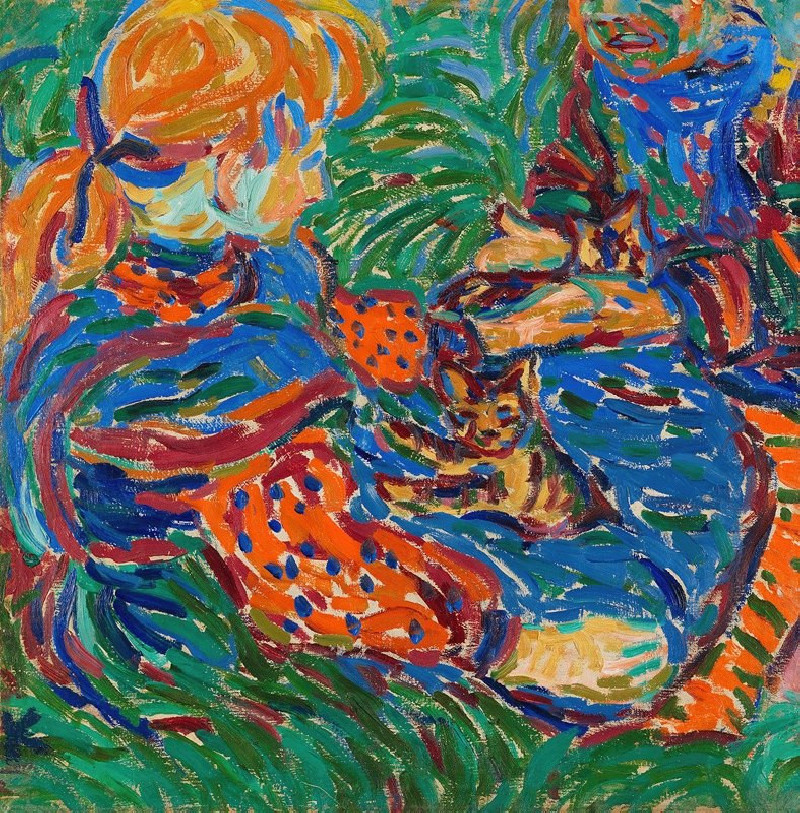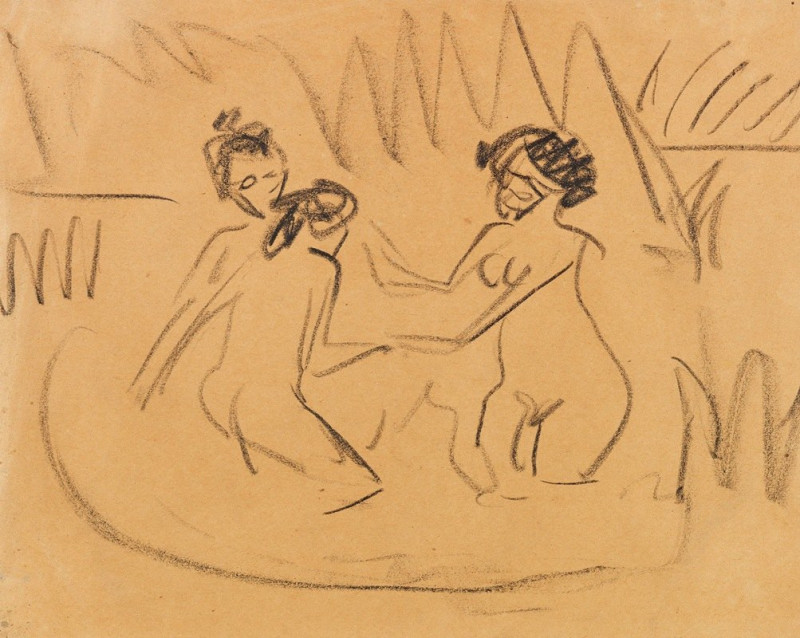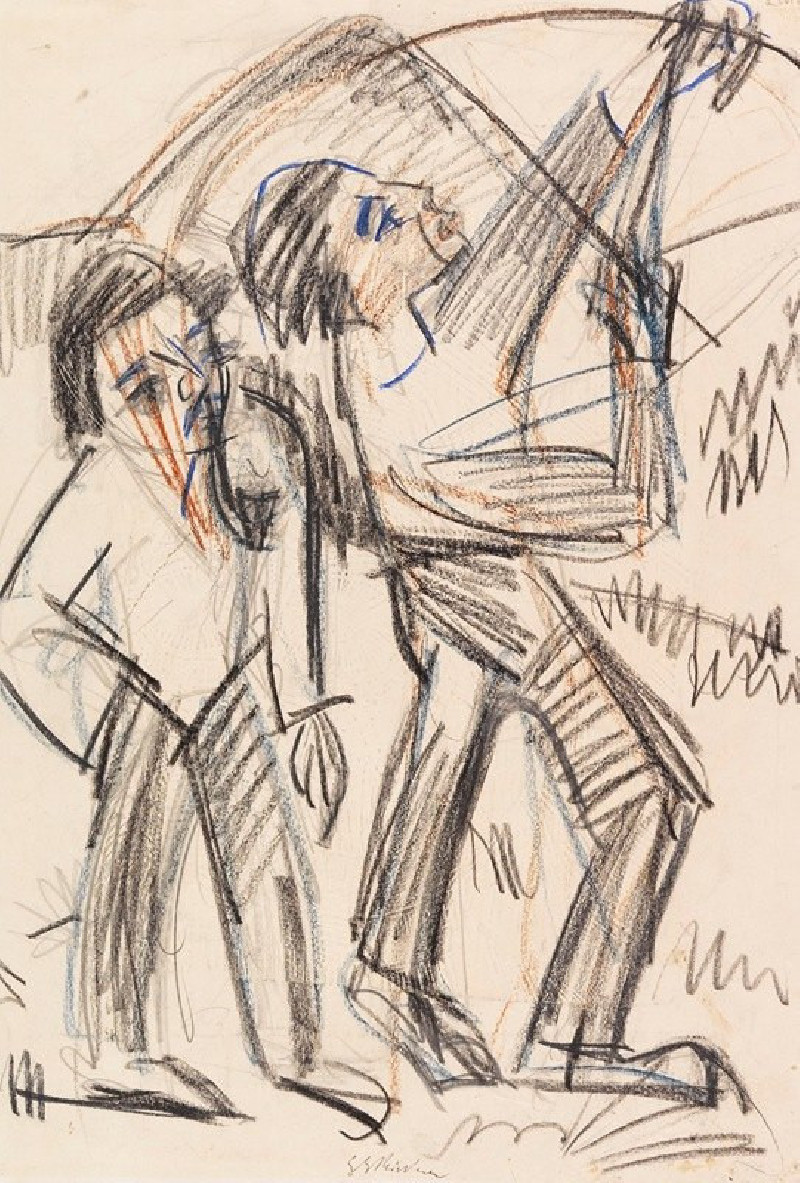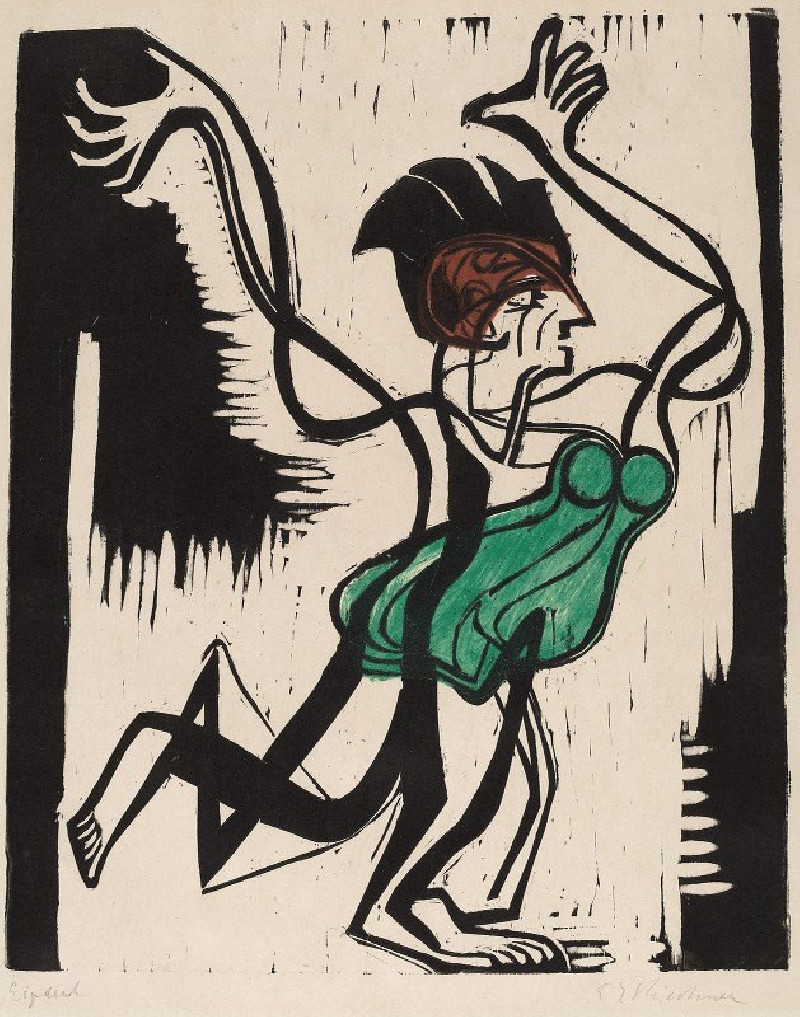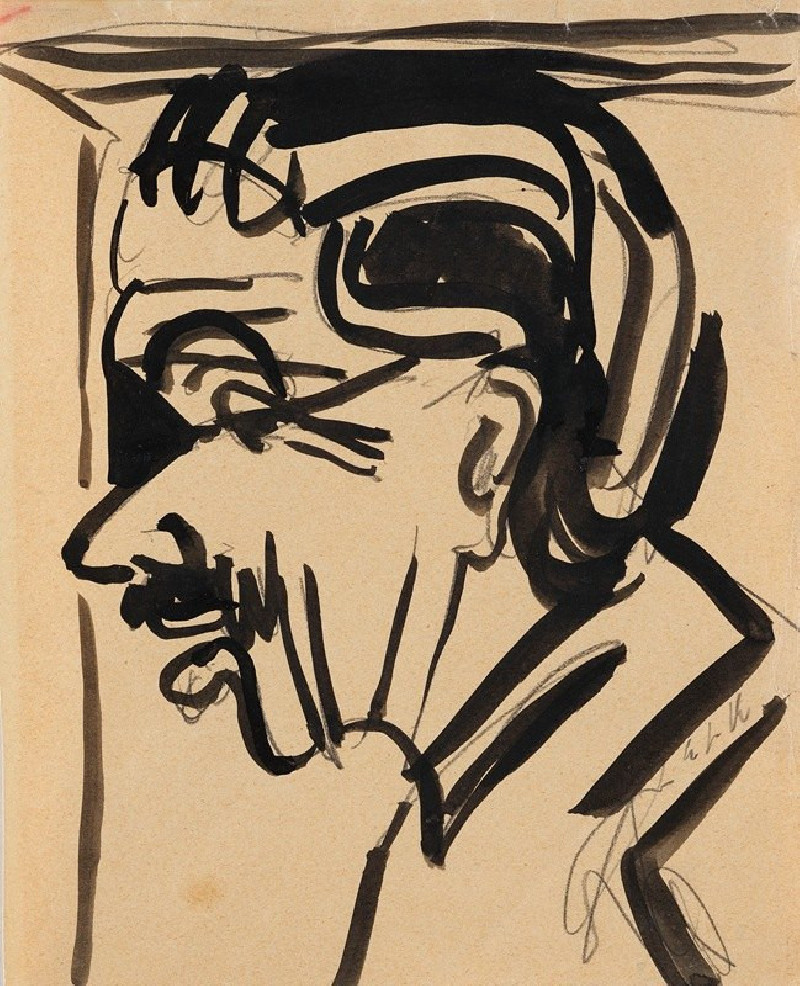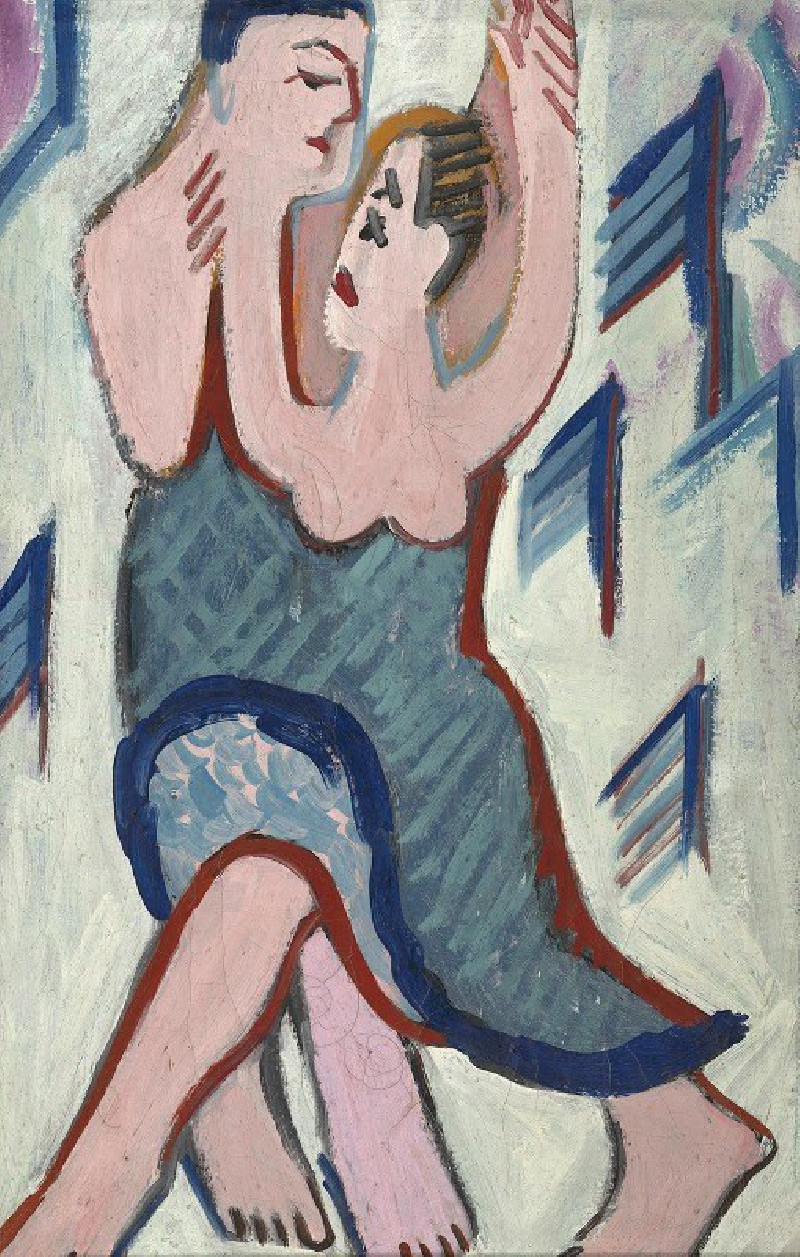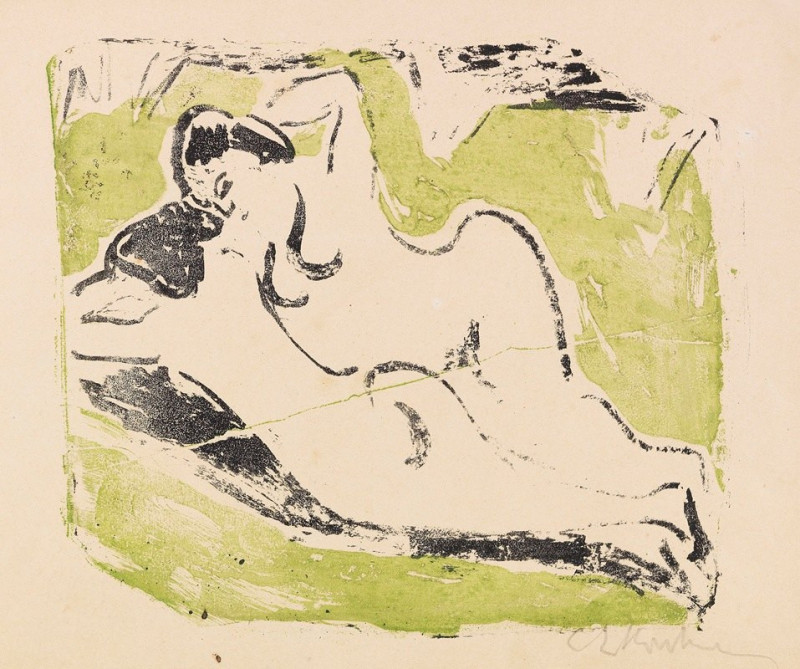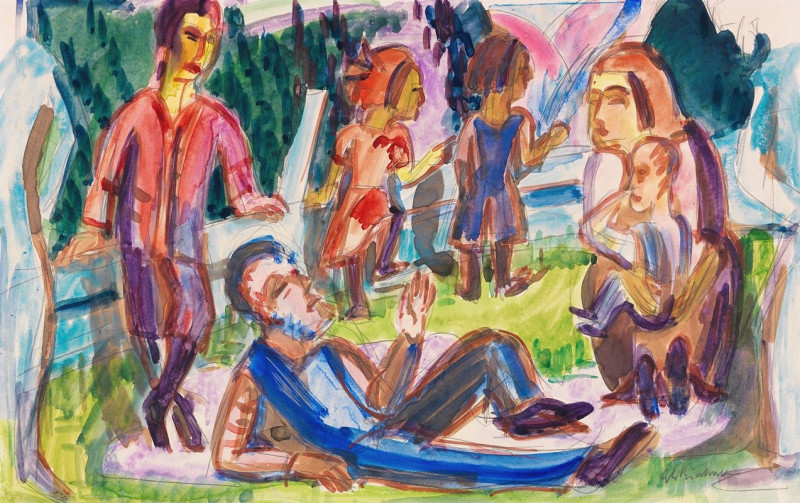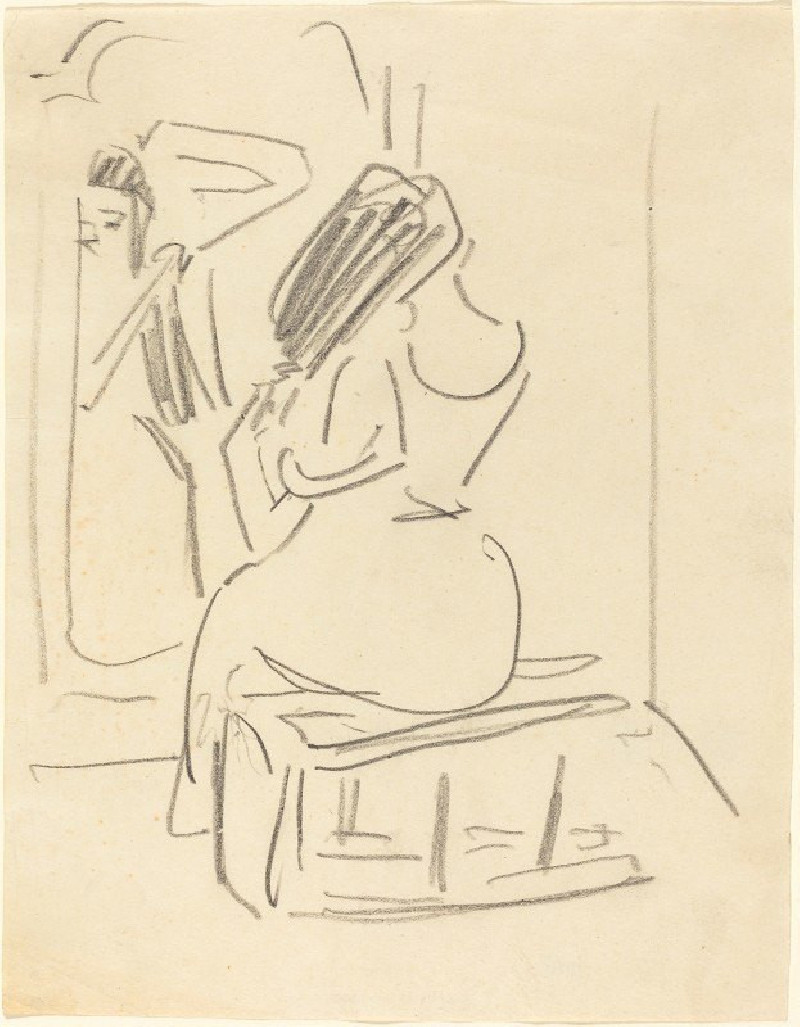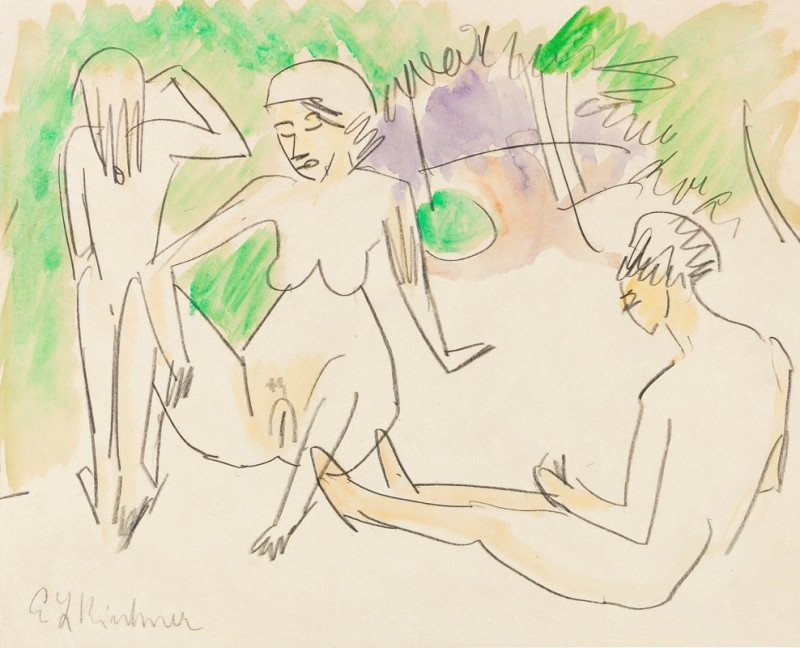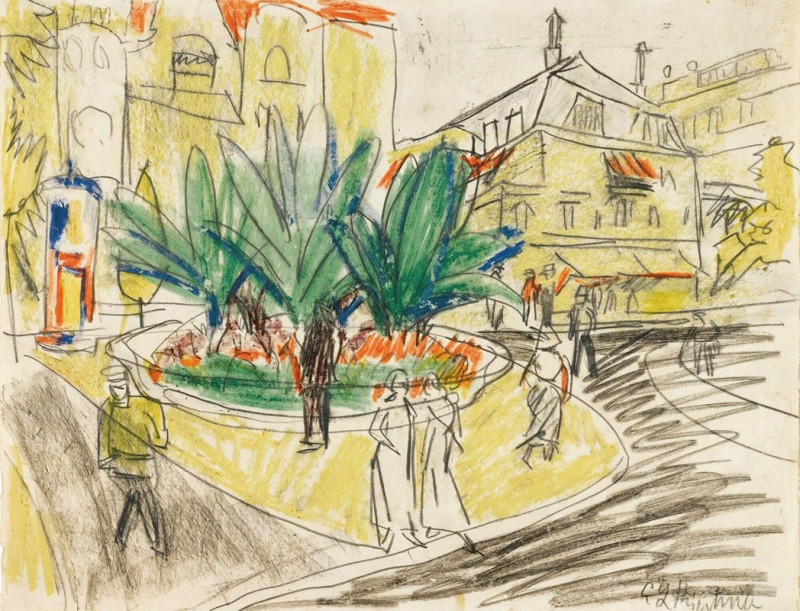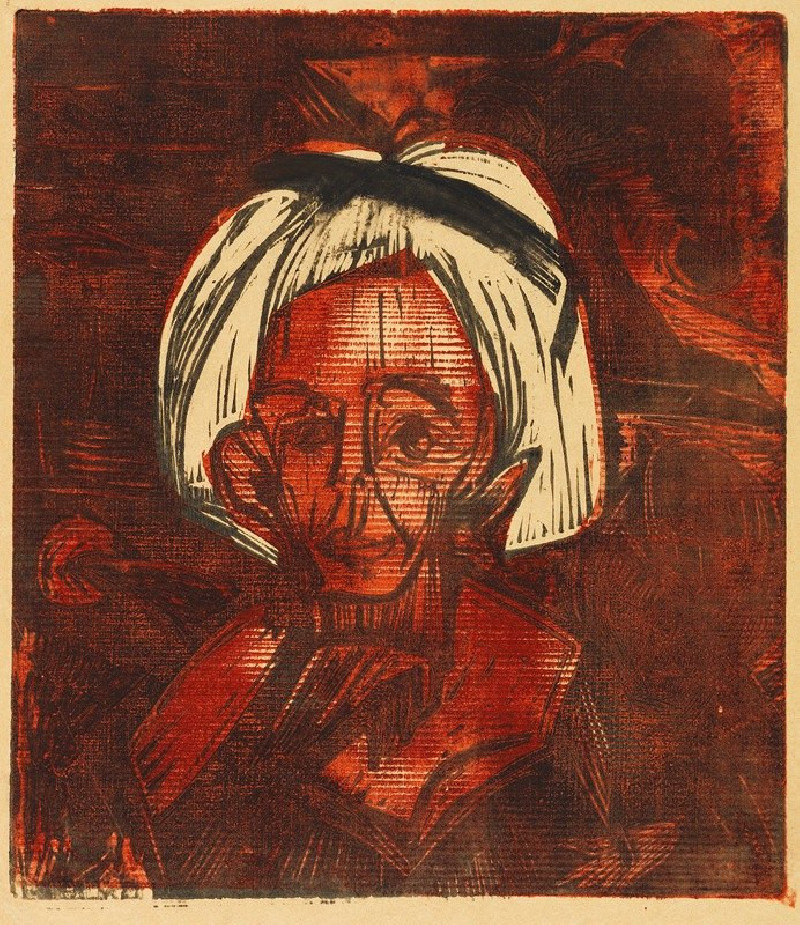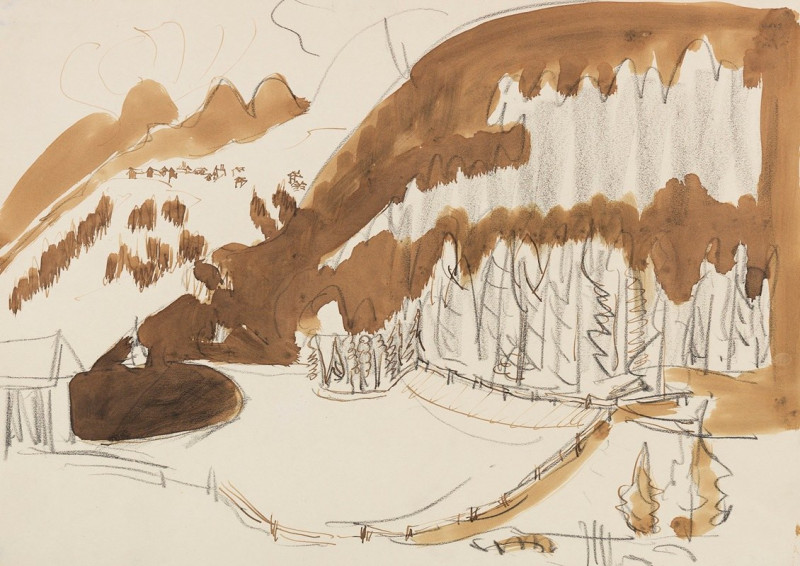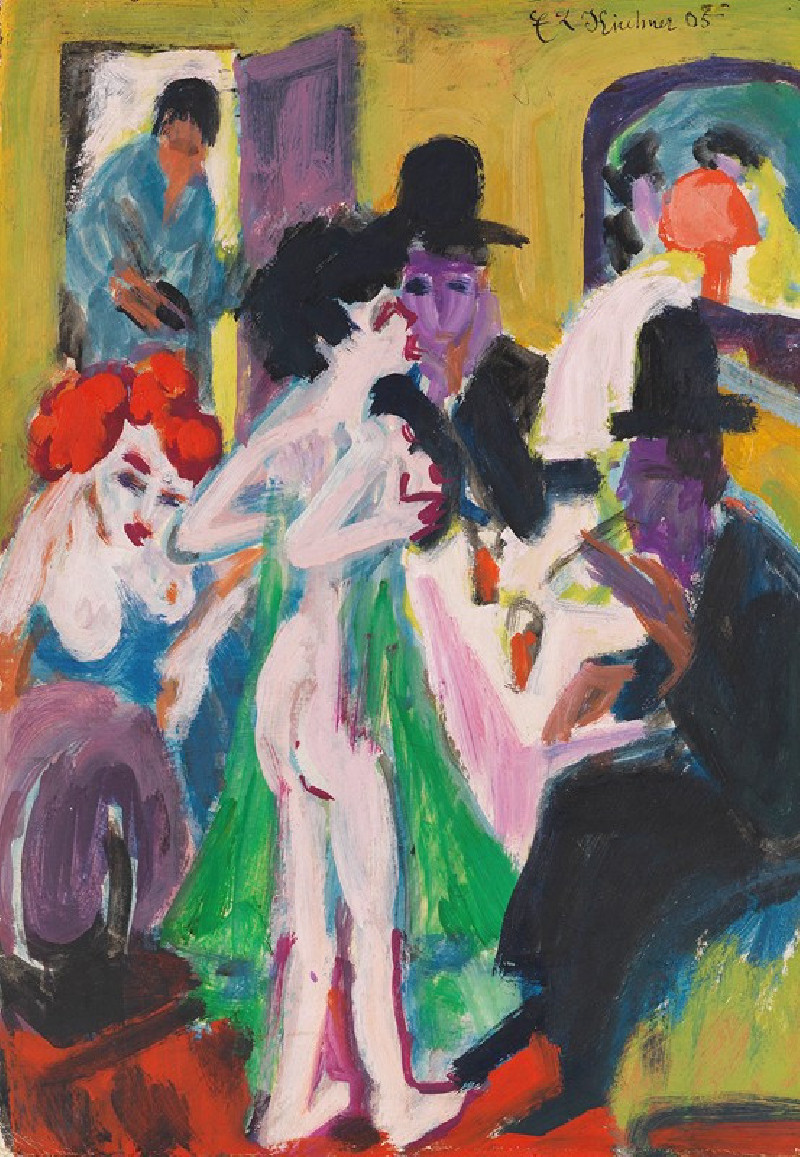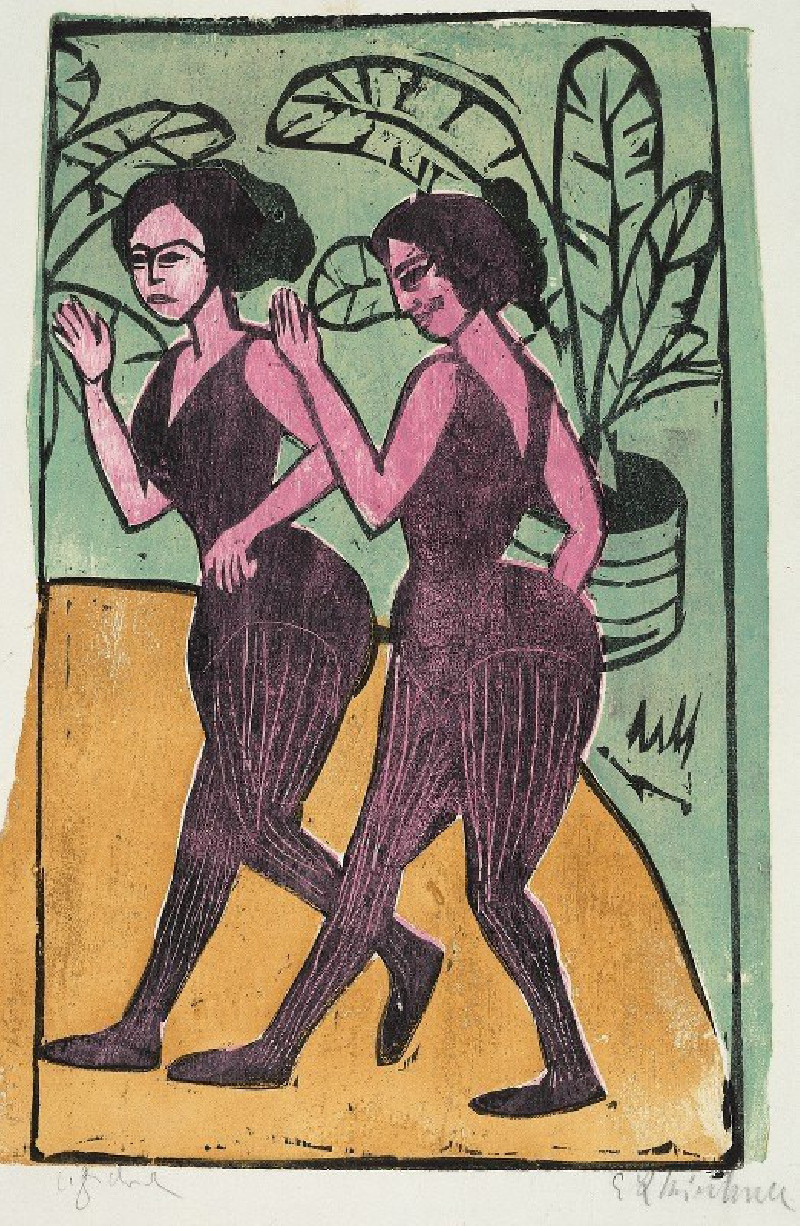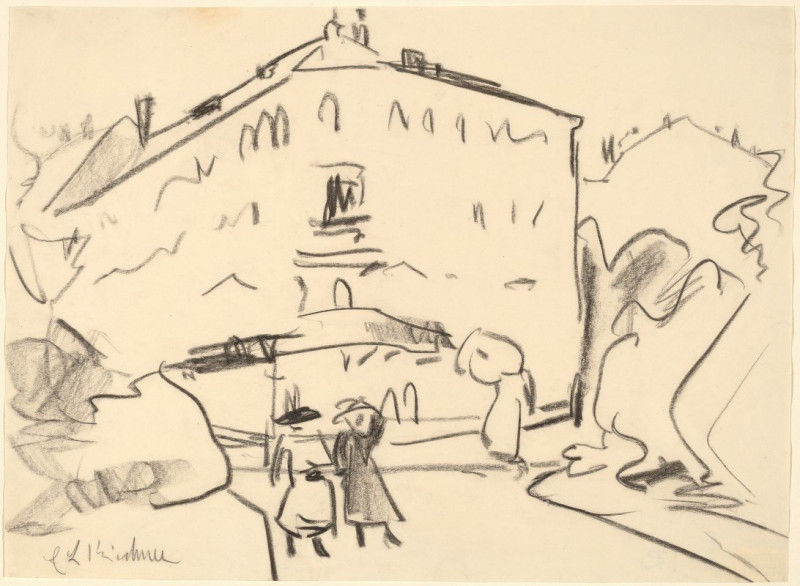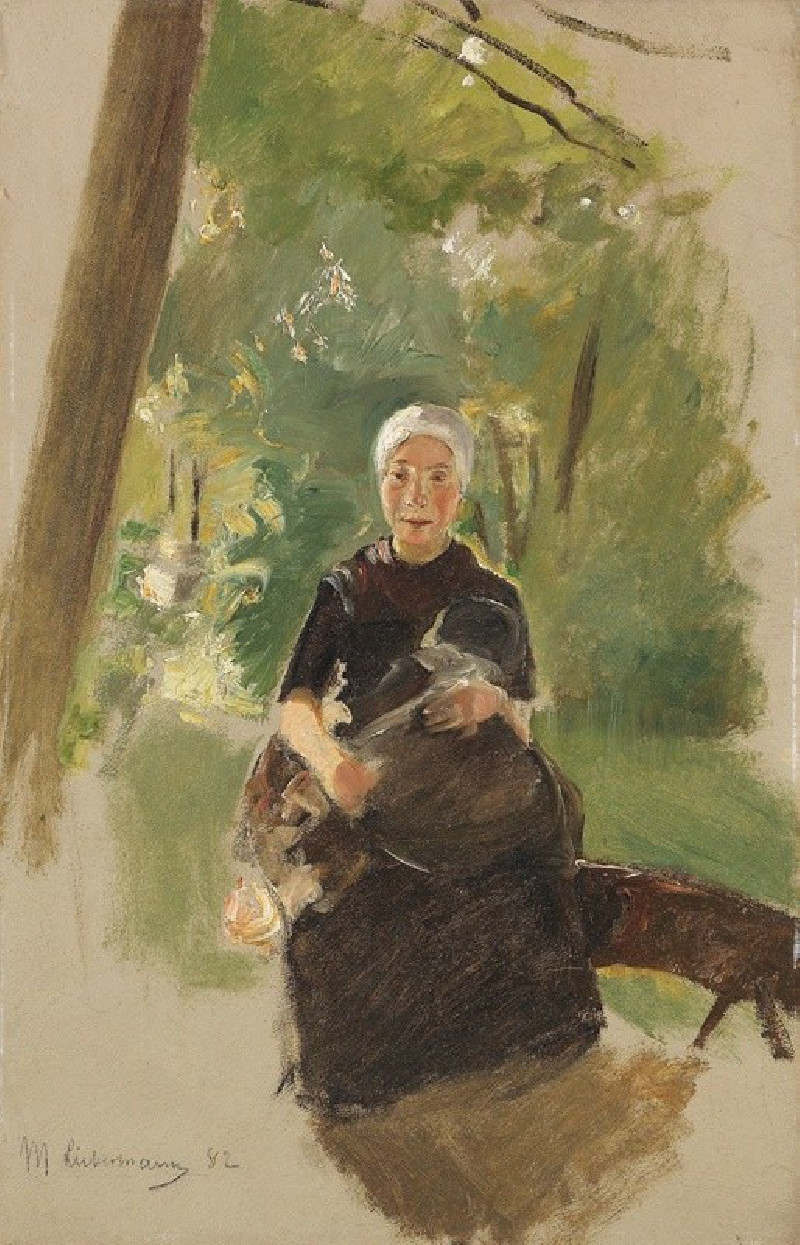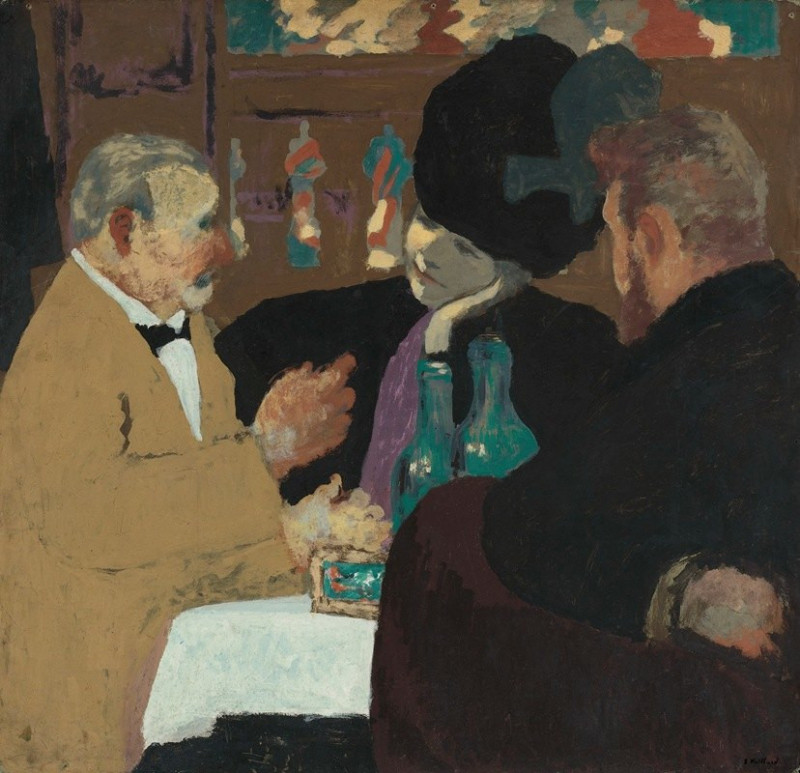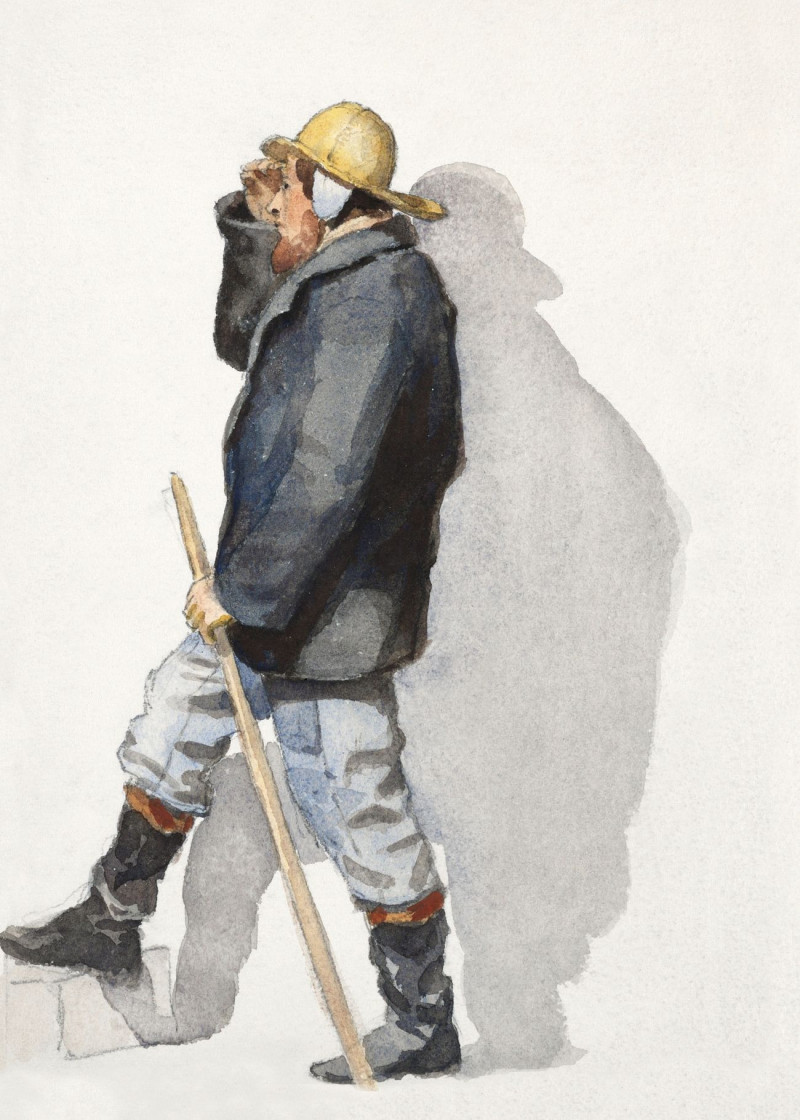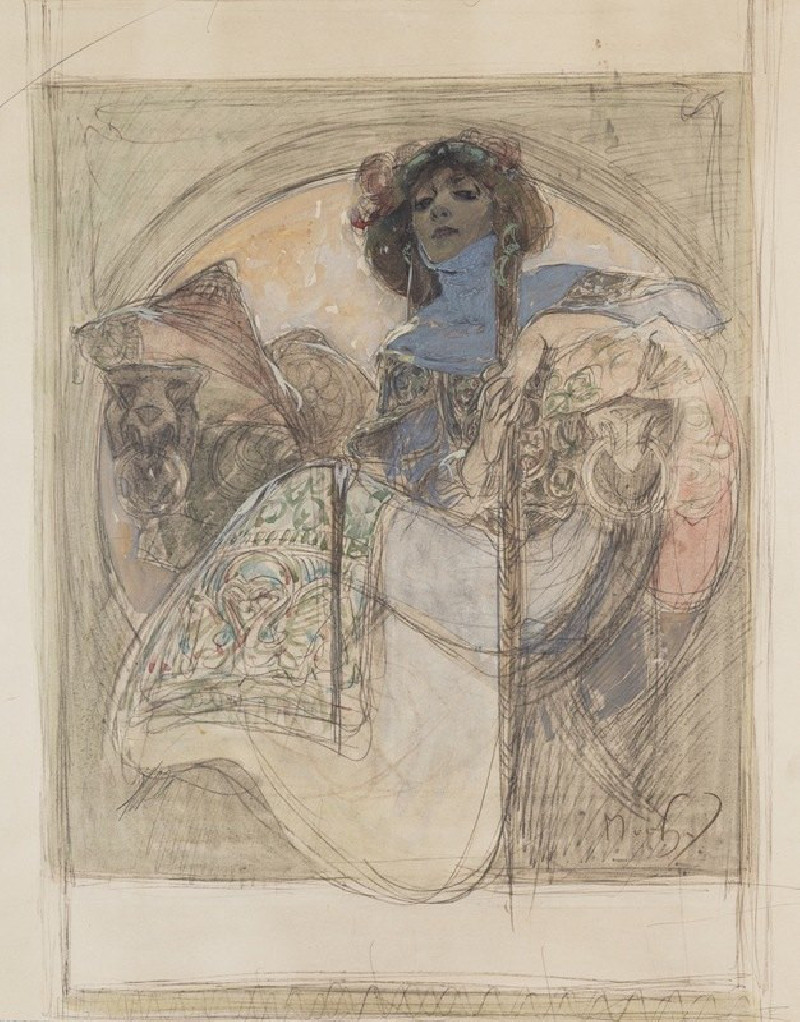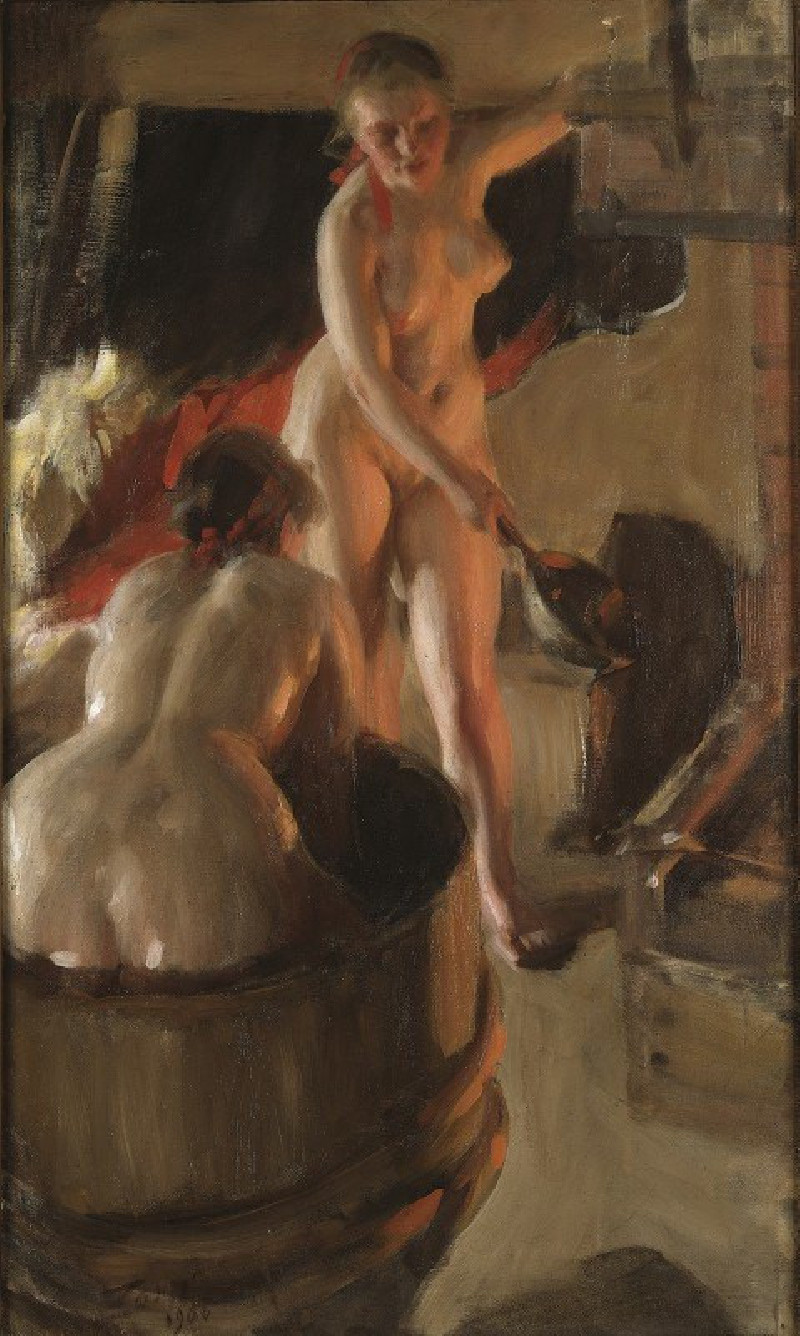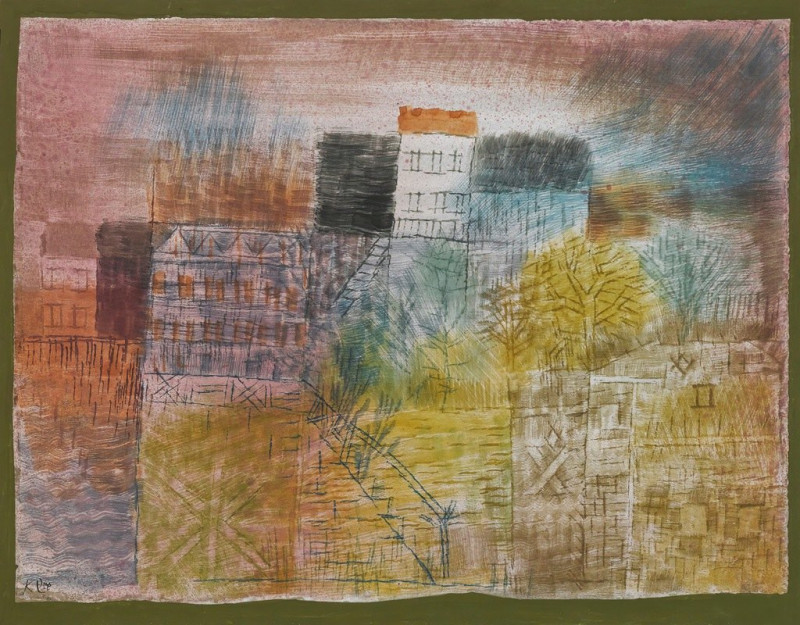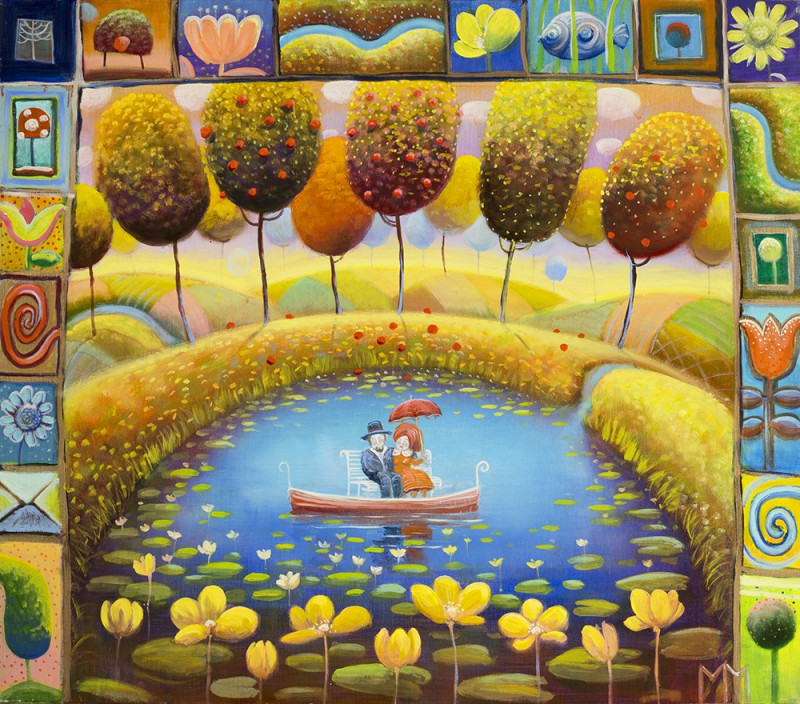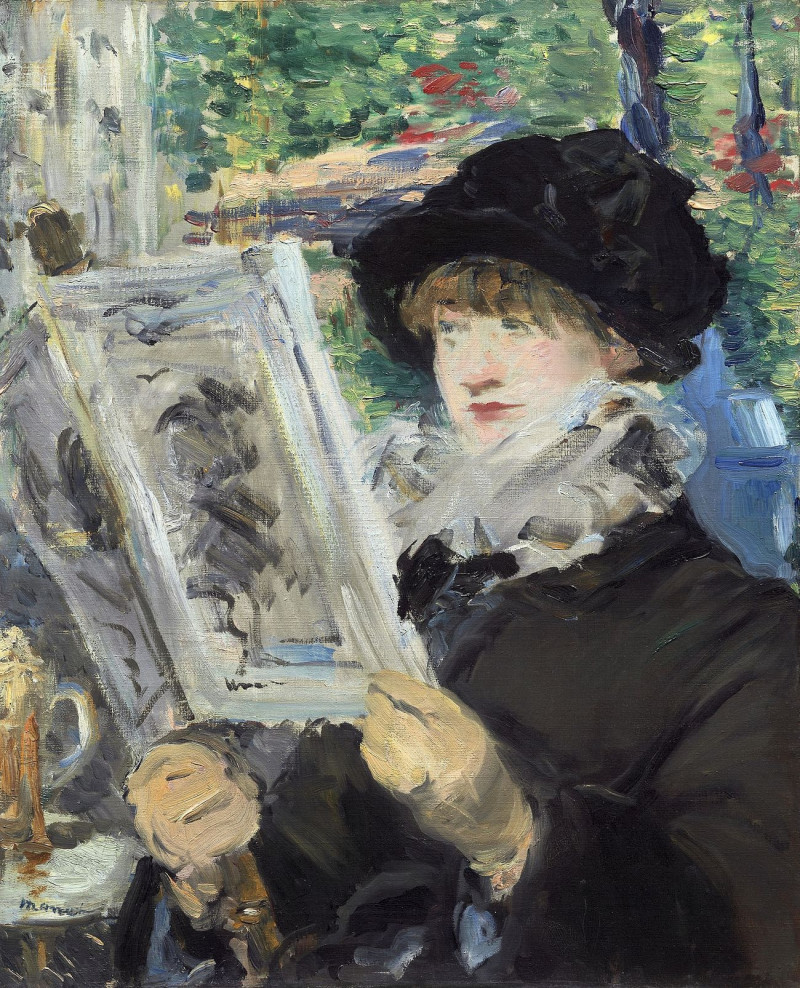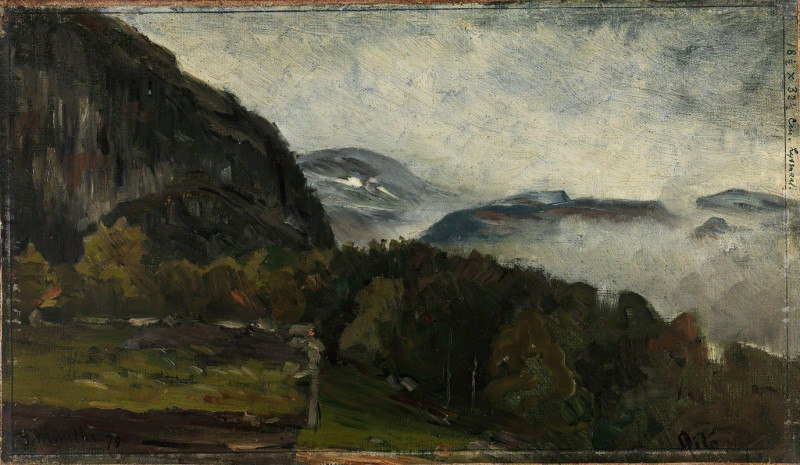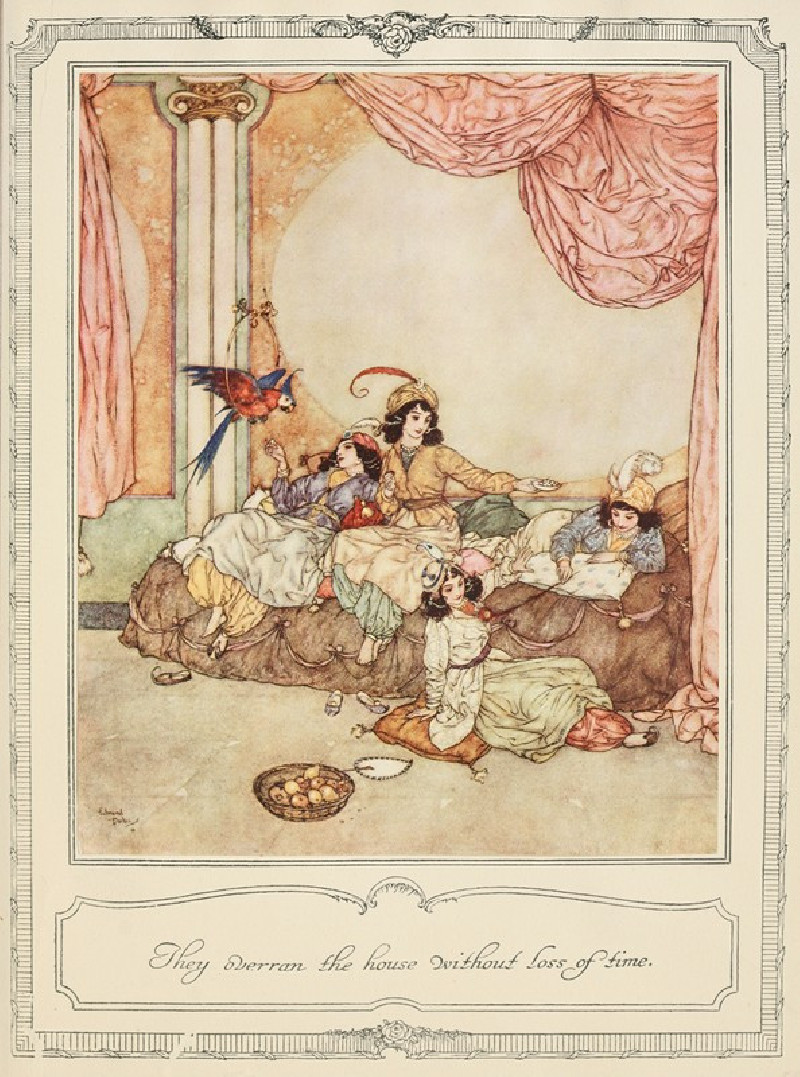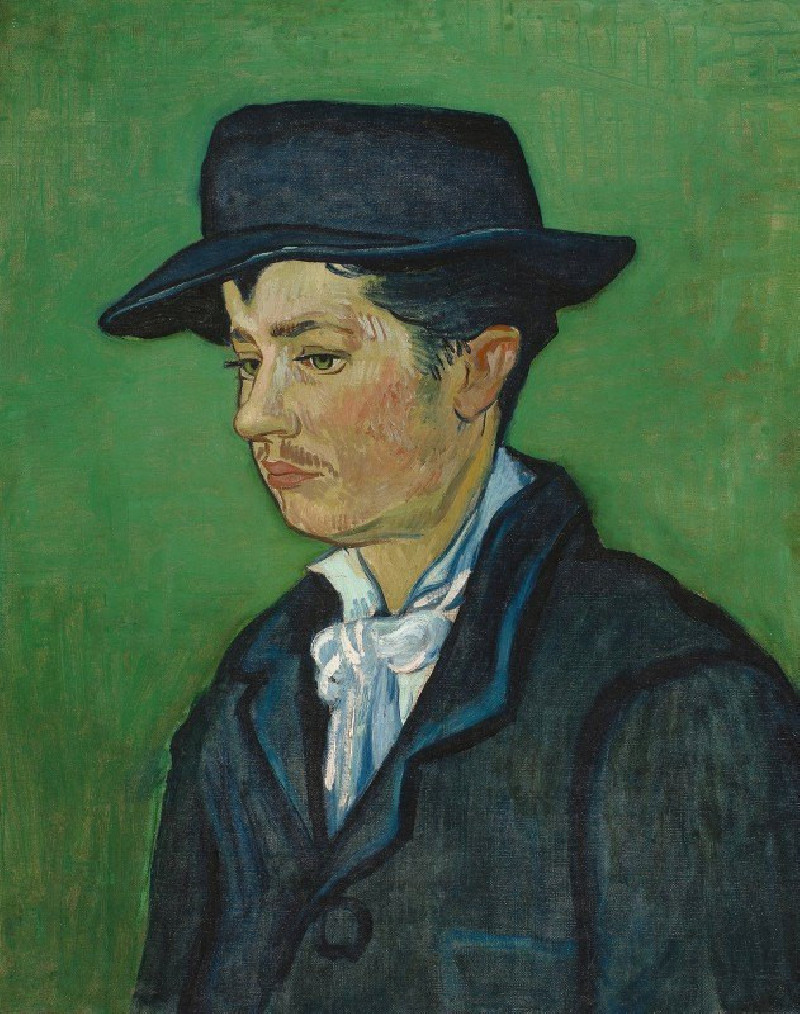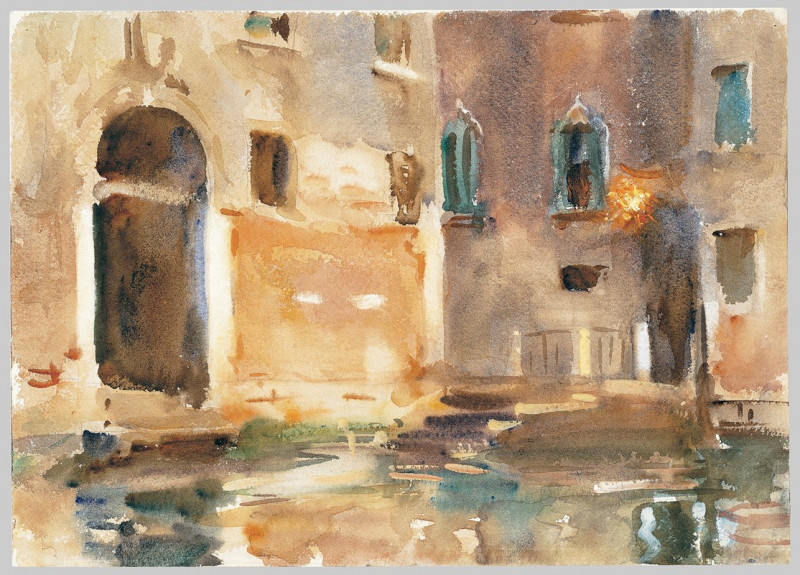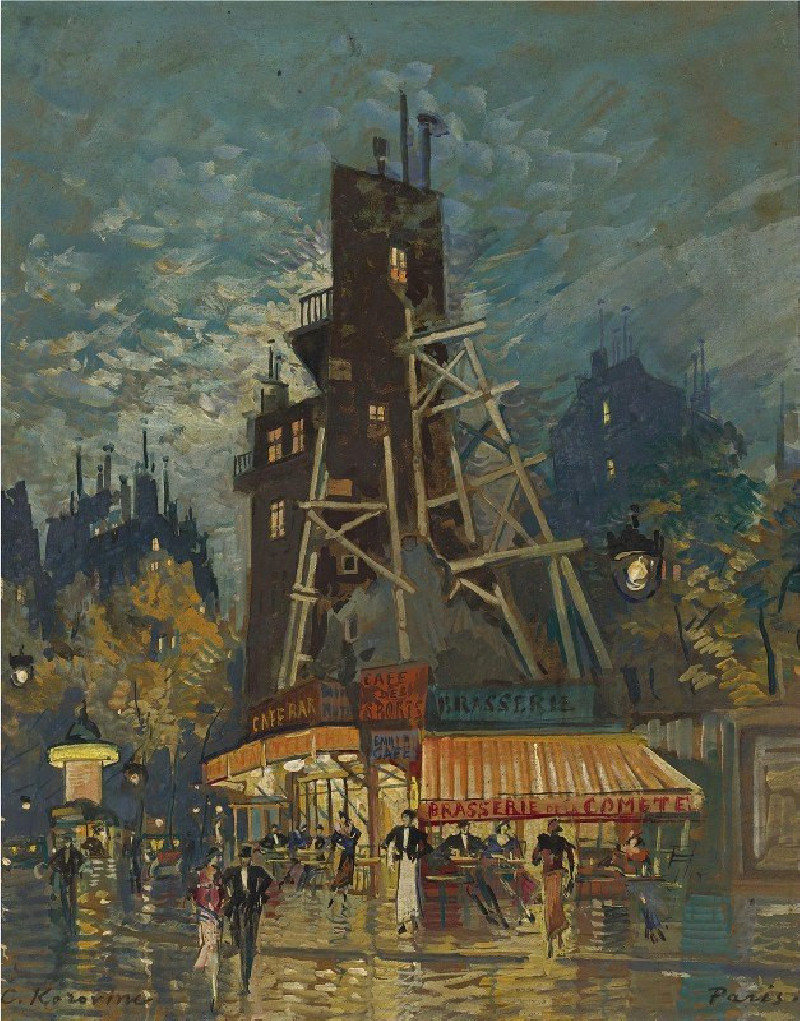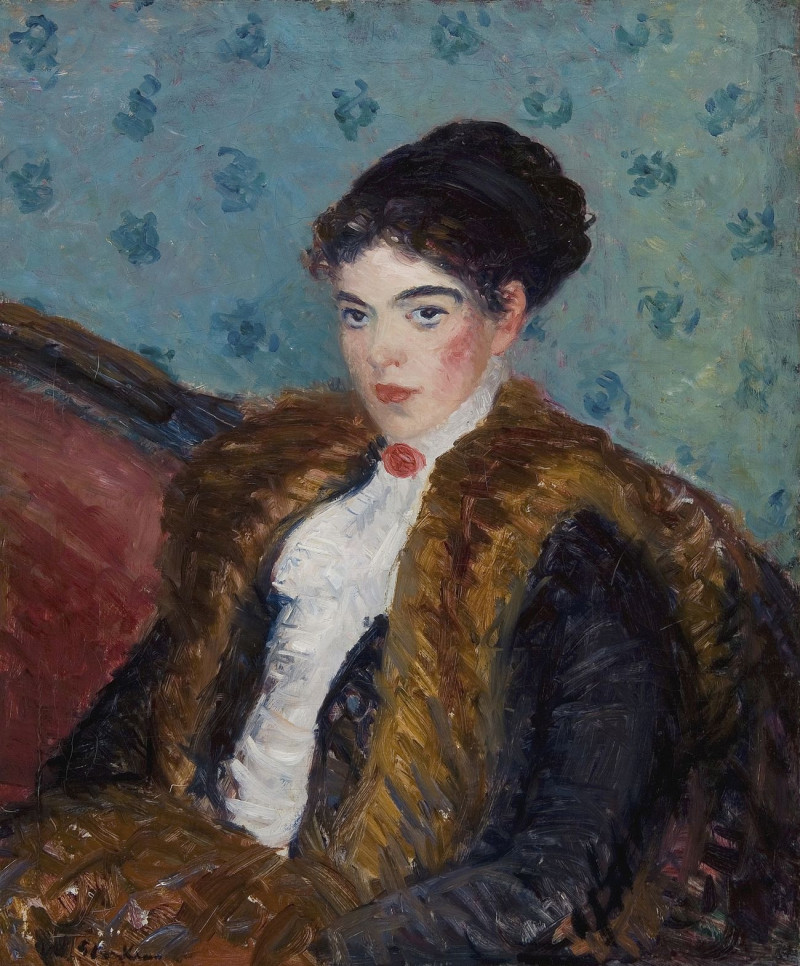Woman Putting on Her Shoes (1912)
Technique: Giclée quality print
Recommended by our customers
More about this artwork
Ernst Ludwig Kirchner's evocative woodcut, "Woman Putting on Her Shoes" from 1912, offers a stirring glimpse into the German Expressionist movement, characterized by its emotional intensity and bold graphic quality. This compelling piece showcases a woman in the intimate act of fastening her shoe, captured in a stark, angular style that is typical of Kirchner's approach during this period.The composition is defined by sharp lines and contrasting dark and light areas, creating a dynamic tension that draws the viewer's eye across the scene. The woman, depicted with a stylized, mask-like face, sits heavily on a chair, the weight of her posture accentuated by the dark, sweeping curves and strong verticals that frame her. The background is minimal yet expressive, featuring an abstracted figure in what appears to be a state of repose or melancholy, adding a layer of narrative intrigue or emotional depth to the scene.Kirchner's work is not just a visual experience but also a commentary on the human condition, exploring themes of isolation, introspection, and perhaps even the mundane yet personal moments of daily life.
Delivery
Returns
Ernst Ludwig Kirchner (1880–1938) was one of the most important German Expressionist painters. He was a co-founder of Die Brücke, a group of German expressionist artists formed in Dresden in 1905. Die Brücke and Kirchner took inspiration from Vincent Van Gogh and Edvard Munch, as well as African and Oceanic art. They used woodblock printing as a medium to showcase their signature style: flat, unrealistic images with vivid colors. The recurring themes in Kirchner's artworks included exotic cultures, faraway landscapes, self-portraits, dancers and Berlin street life. His paintings and prints effectively portrayed non-European cultures despite the fact that he never traveled outside of Europe.


